The online army of ISIS supporters – from lone keyboard jihadists to unofficial media groups that whip up a steady stream of propaganda for the terror group – often counts on the potency of an image to convey their message of the day. Adding threatening words, a Quranic verse, a quote from an infamous terrorist or quick tips for a would-be terrorist, photo editors loyal to terror leaders craft simple PR posters that are distributed online and posted on ISIS Telegram channels alongside standard propaganda fare of videos and nasheeds.
One image circulated last week used a photo of the Los Angeles skyline, added a masked jihadist holding an ISIS flag overlooking downtown, and added an explosion at the top of the Aon Center, the third-tallest office tower in the city. “Our promise will soon be fulfilled,” said the message on the poster. Vowing destruction in a major city is standard fare for these threats released by ISIS-supporting media groups; what was unusual was the choice of L.A. in a medium that usually shows New York, Washington and international cities such as Paris, London or Sydney as targets.
The Los Angeles Police Department said it was “aware of the posting made on social media… however, at this point we have not been able to find any credible threat against buildings in our city.”
“Nevertheless, we are taking this very seriously and are working with our federal partners to coordinate any information that will lead to the source of the post,” the department added in a statement.
A computer engineer with sympathies for ISIS yet no personal attack plan in the works can easily cook up a threat poster with a randomly chosen picture for the target, and it can be viewed by an impressionable resident of that city who harbors greater ambitions on the attack front. Consider these scenarios used in recent months by ISIS-backing media outlets.
Intended targets
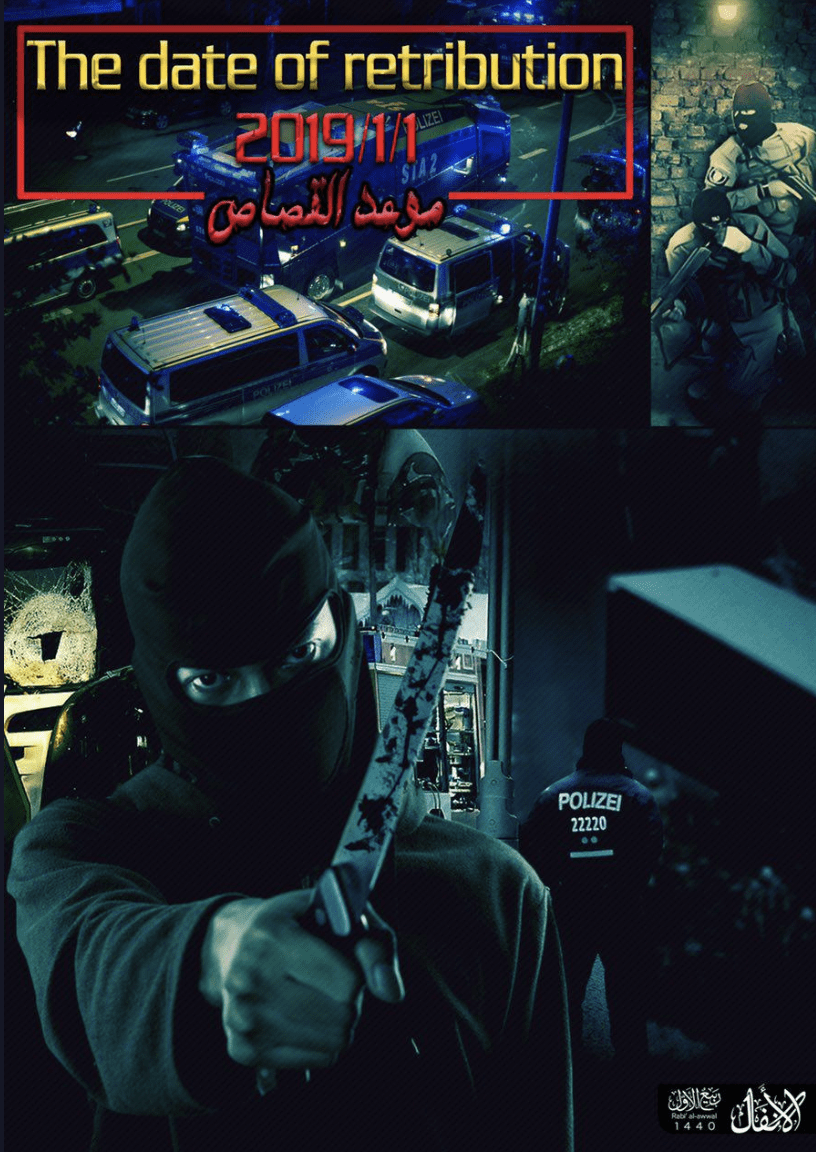
ISIS supporters ushered in this past holiday season with a poster utilizing imagery from the 2016 Berlin Christmas market attack and vowing “retribution” to come. A few weeks later, an ISIS supporter killed five people at the Christmas market in Strasbourg, France. After the latter attack, naturally more posters were issued invoking Strasbourg, showing a murdered Santa Claus, etc. ISIS’ official newsletter, al-Naba, told Western jihadists to emulate the Strasbourg attack as “an unexploded ordnance in your land modifies a thousand operations in our territory.”
This isn’t to say that the Strasbourg terrorist saw the Berlin poster and took it as an order to attack, or that the media group issuing the poster knew that the attack was coming. And the poster pegged “retribution day” as New Year’s Day. But the Christmas posters from ISIS groups show specific targets or genres of targets within an intended attack window — the closest these threat posters usually come to actionable specificity.
Suggested targets and methods

Suggested targets represent a substantial portion of the threat posters issued online by ISIS supporters. These can include nonspecific targets — a rash of threats against concert venues this past fall used stock photos of concert crowds with terrorists photoshopped in, not showing any specific venue or band — or specific practical and ISIS “dream” targets, such as their persistent calls for someone to attack the Vatican or Pope Francis on their behalf. (They’re behind schedule on the 2020 conquest of Rome predicted in the early 2015 ISIS e-book “Black Flags from Rome.”) Recently, the White House and Capitol have also figured prominently into posters of suggested targets, including an image showing the Capitol exploding to mark the opening of the 116th Congress.
Promoting a recent attack
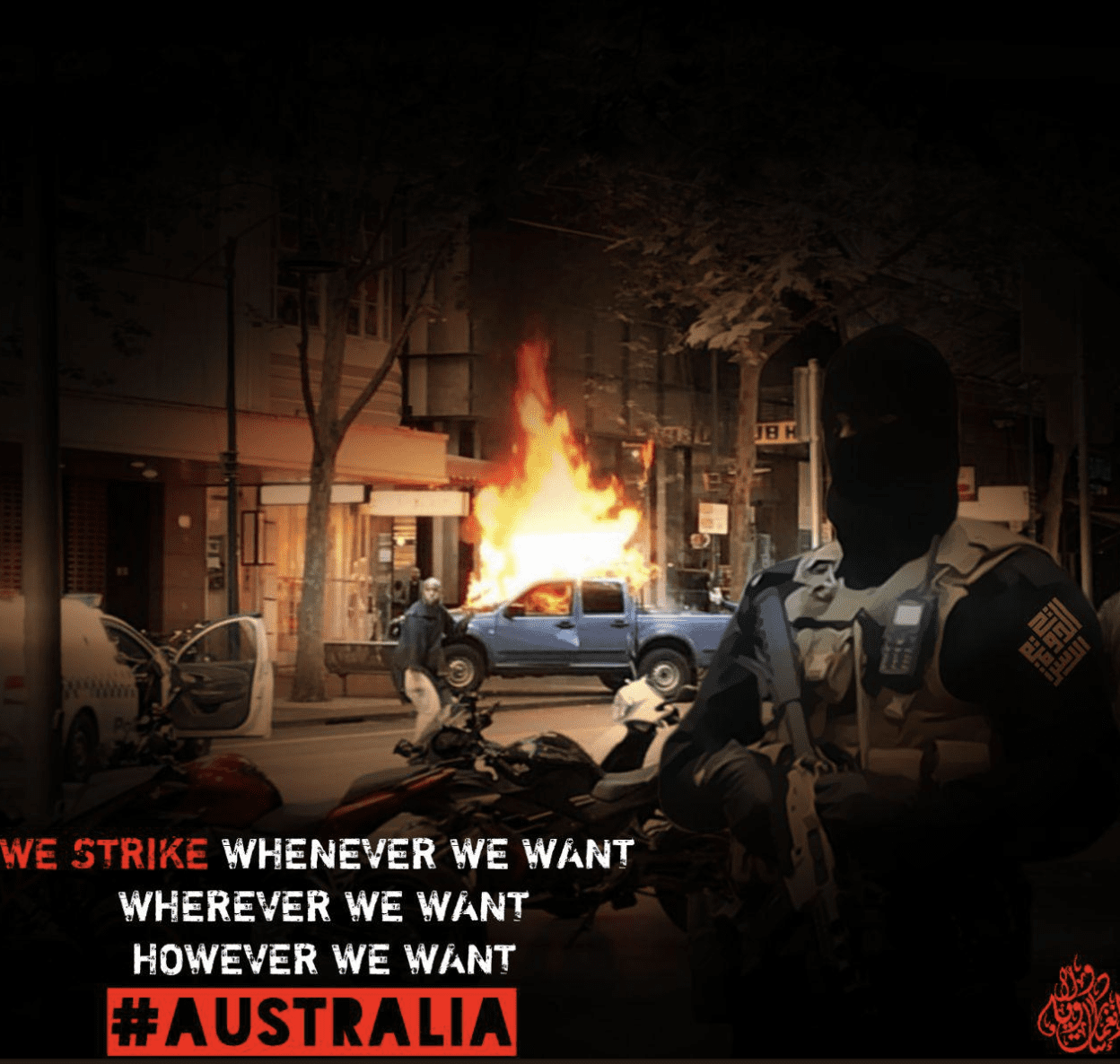
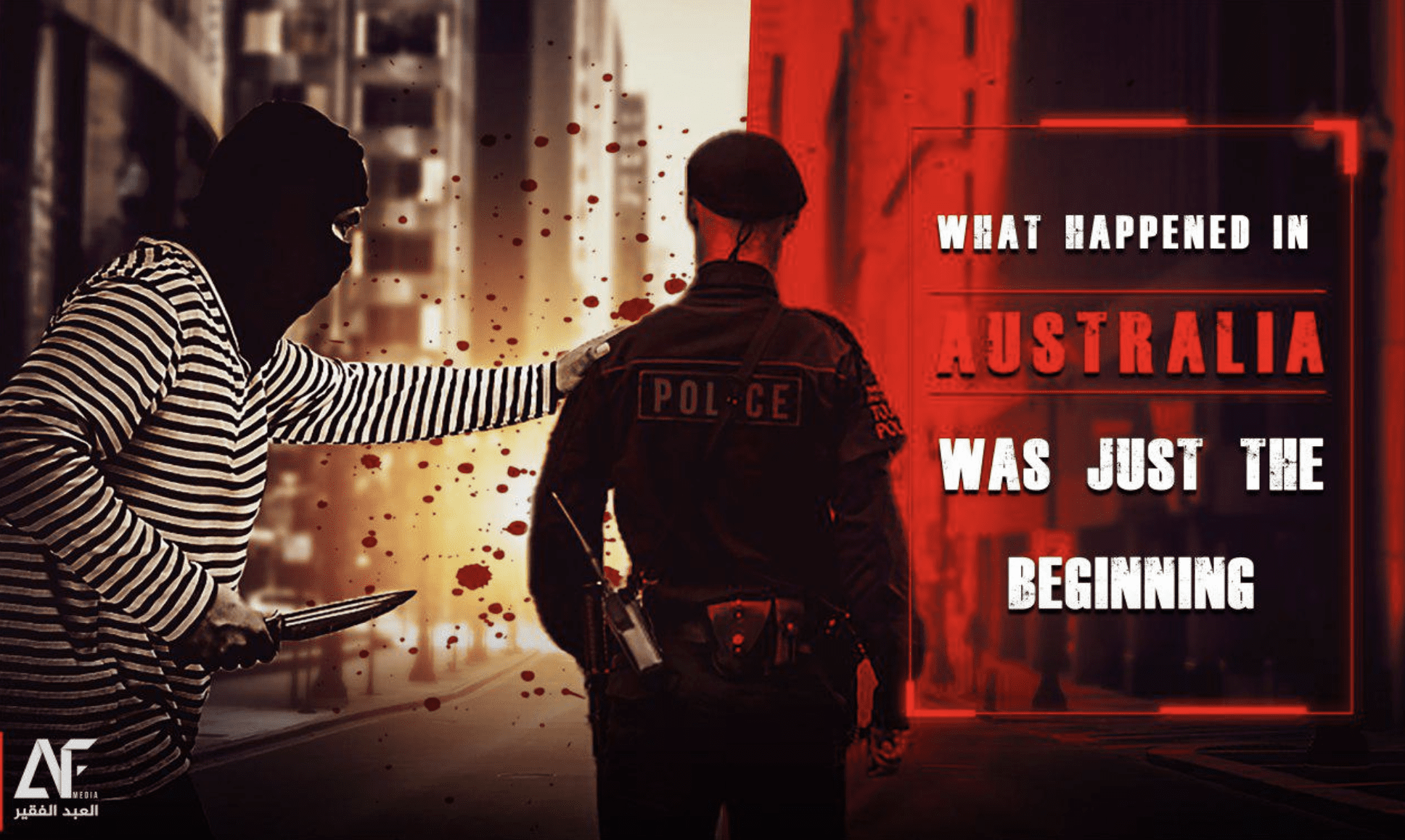
ISIS media groups are usually especially active in the hours after an attack. After the November Bourke Street stabbings in Melbourne, ISIS claimed through their official Amaq news agency that the attacker was “a soldier of the Islamic State.” ISIS supporters quickly picked up the ball and incorporated images from the attack scene into stylized posters, with one vowing, “We strike whenever we want, wherever we want, however we want #Australia.” Their goal is to put the populace on edge about the possibility of follow-up attacks and to inspire would-be jihadists to launch similar attacks of their own.
Threat posters also employ older “greatest hits” images of past attacks in order to inspire similar attacks in the future, with oft-cited attacks including the July 2016 Nice, France, truck attack and the November 2015 complex coordinated attacks in Paris.
Thematic photo selection
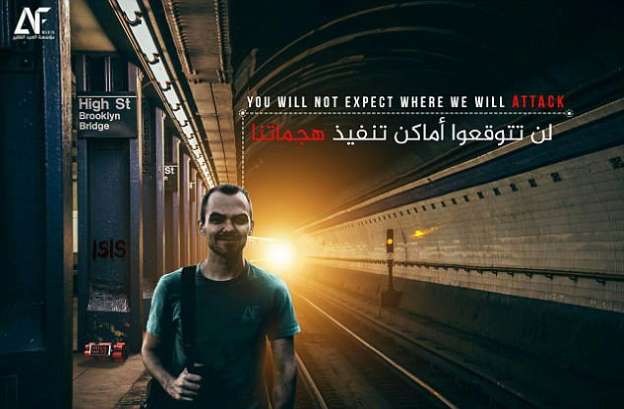

Is the picture in the poster actually a target or simply representative of the kind of target the creator has in mind? Is a specific Christmas square the target, or did the creator of the poster simply pluck a representative photo of pretty civic Christmas decorations yielded by a Google search? A bit of online research often shows that sometimes the “target” shown in a threat poster is simply high up in image search results for broad, relevant keywords.
In April 2018, Al-Abd Al-Faqir Media released an image of explosives at New York’s High Street – Brooklyn Bridge Station, a man standing on the platform, with the threat in English and Arabic: “You will not expect where we will attack.” Does that mean they were planning to attack that specific station? In this case, the exact photo of the High Street station is high up in search results when entering the words “train station” at free photo site Pixabay. Sometimes the “target” may simply be an image easily found by the terror content creator.
Current events
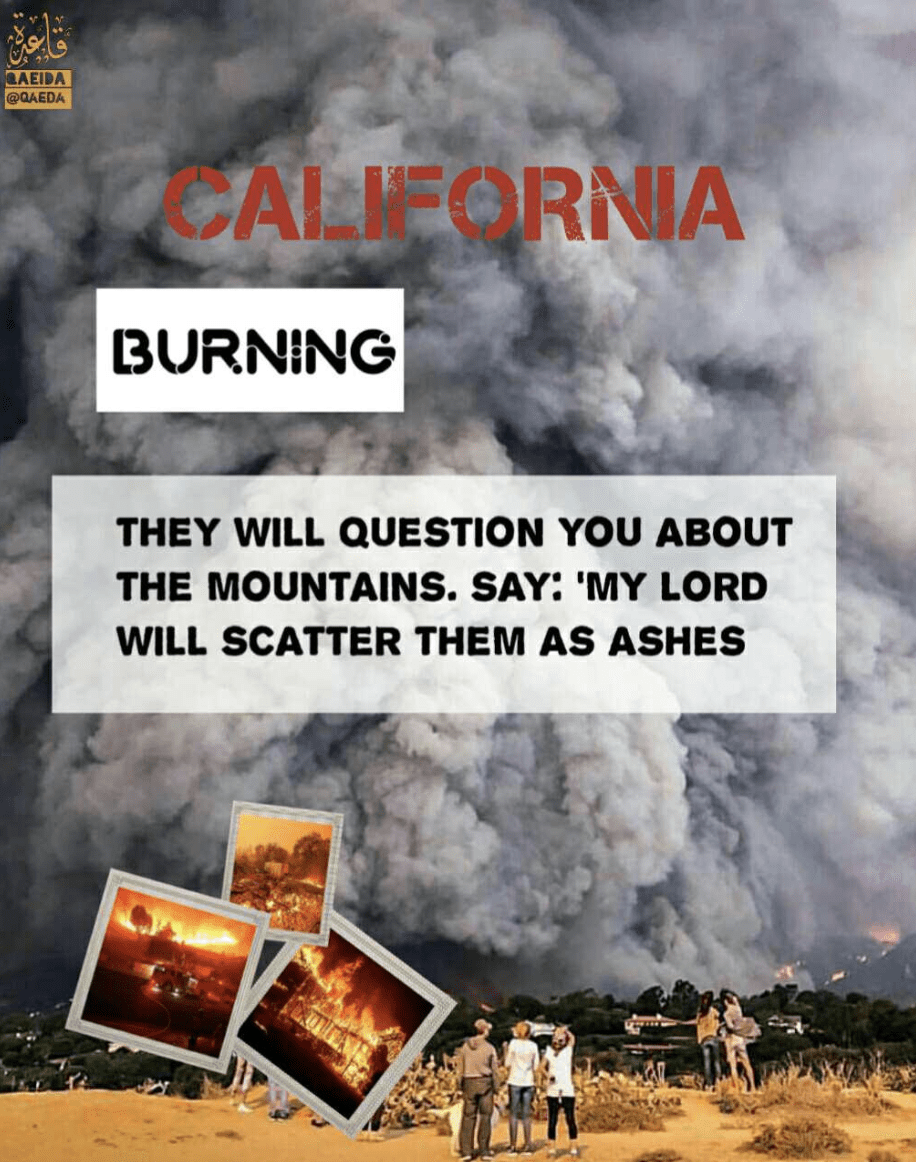
The event may not be related to terror at all, but those crafting terror threat posters will sometimes pluck news images with an eye to a) sow some seeds of dezinformatsiya doubt among a nervous populace about the true nature of the event and b) let would-be jihadists know that they can wreak similar havoc by their own hand. A prime example is the California wildfires this past year; al-Qaeda supporters circulated a poster through media channels highlighting “California burning,” particularly of note as the terror group has a documented history of promoting arson as a terror tactic.
As the “Gilets jaunes” protests, or “yellow vest” demonstrations, rocked France in November, ISIS supporters issued posters calling on jihadists to take advantage of the mass, chaotic crowds to conduct attacks. One poster urged jihadists to make “an appointment with an important event — wait until Sunday” when high numbers of protesters were expected on the streets. Another similarly warned of a Sunday attack: “Attendez — Just Terror — sera chez vous, Dimanche, en France,” while yet another poster promised a “bloody” Sunday.
Random photos

Occasionally terror-supporting media groups will use photos or stylized images, including ones lifted from gaming, that have no meaning as far as specific or suggested targets. The only message that matters in these threat posters is what’s added in the photoshop process. This poster circulated late last year has nothing to do with threats to a dilapidated farmhouse or a re-enactment of “The Birds,” but everything to do with the radiological hazard warning signs and ISIS’ “Just Terror” slogan for lone jihadists. “We will soon do this” caps the CBNR threat.





